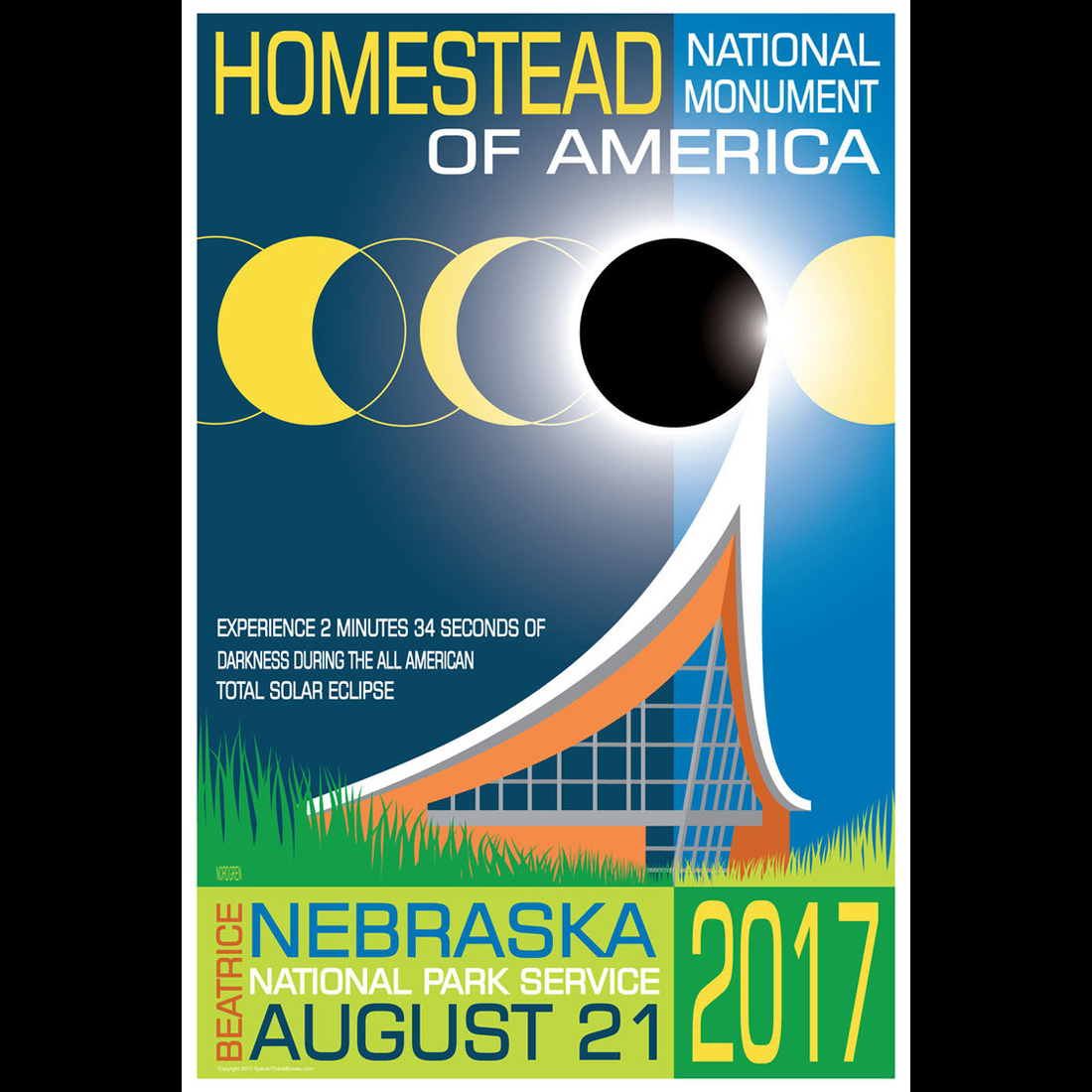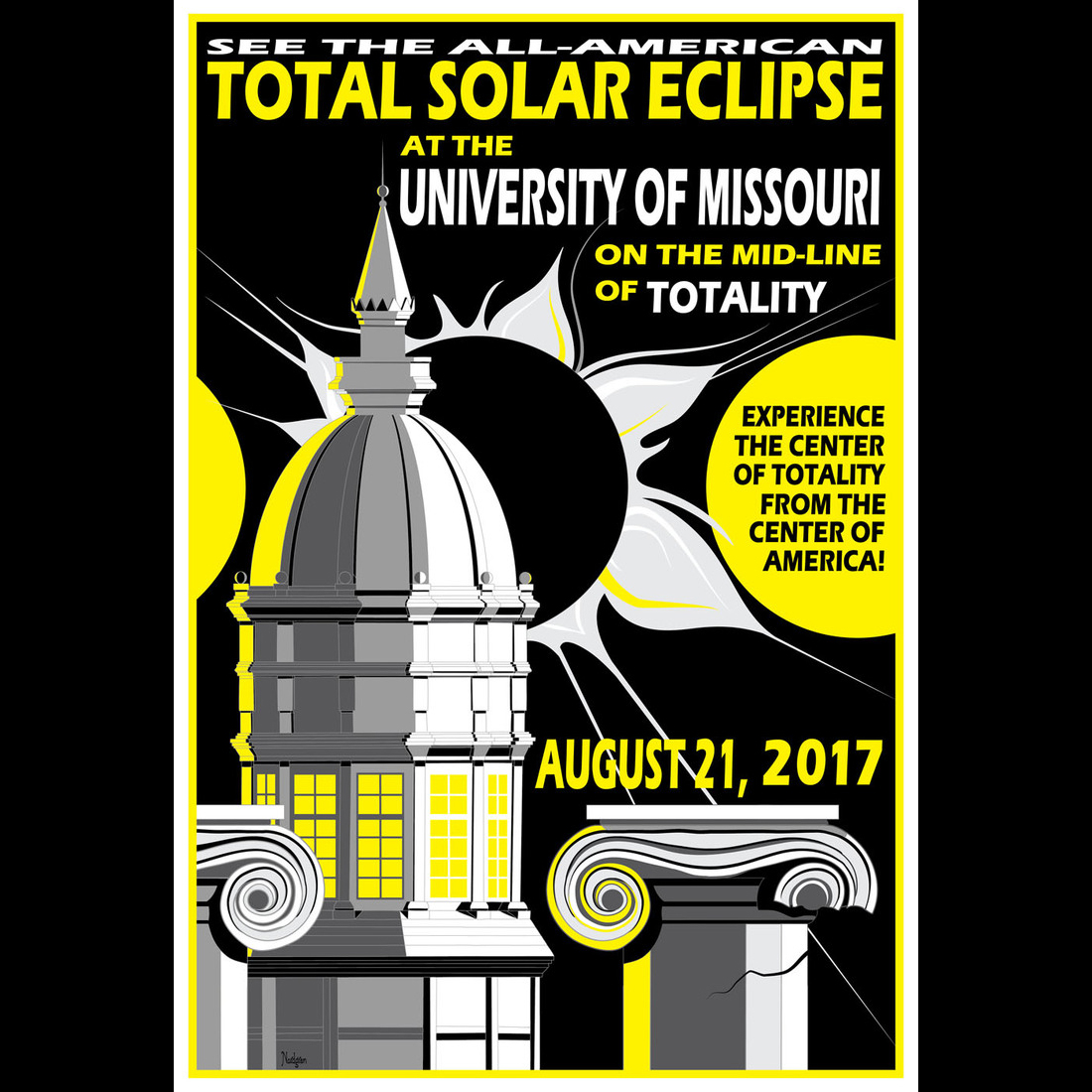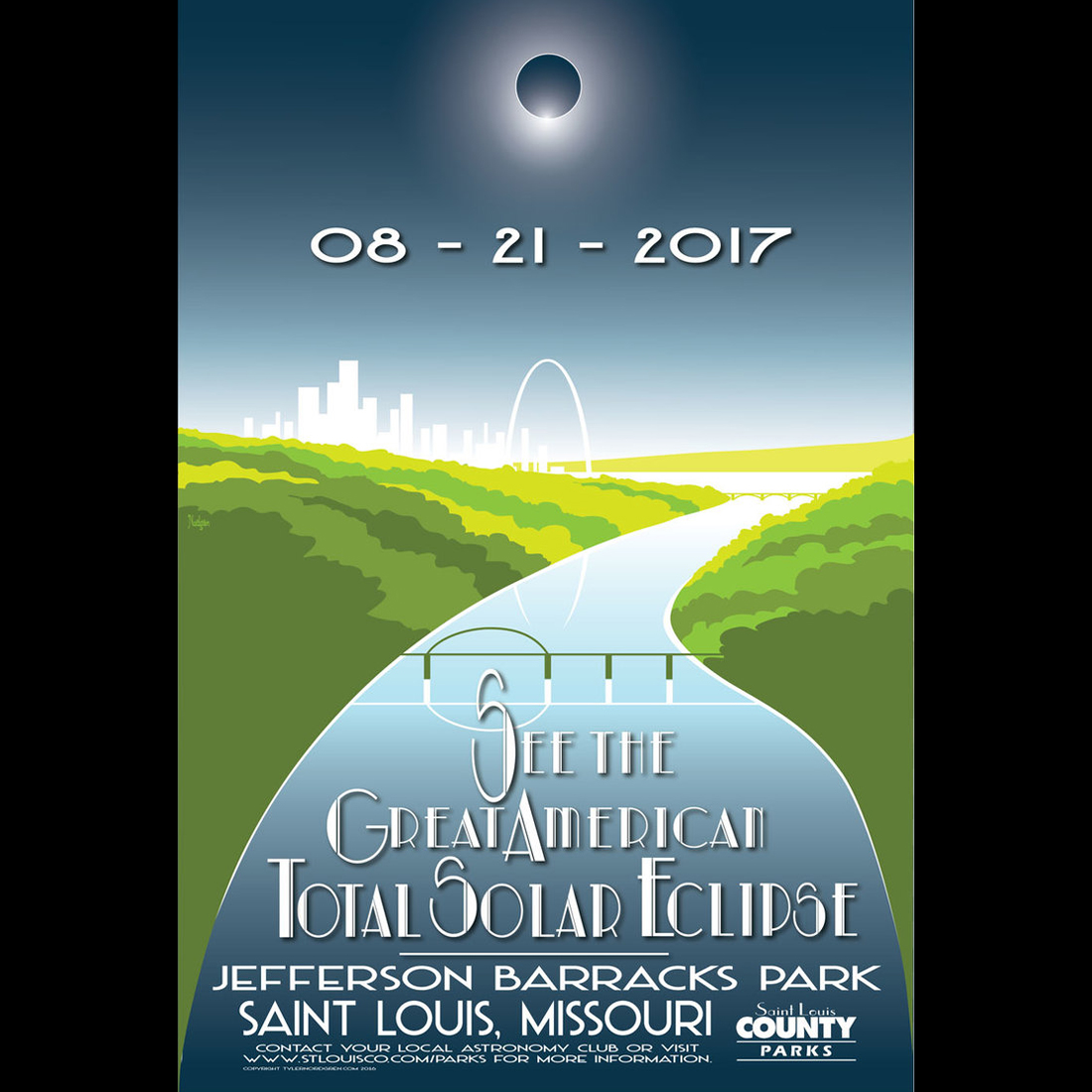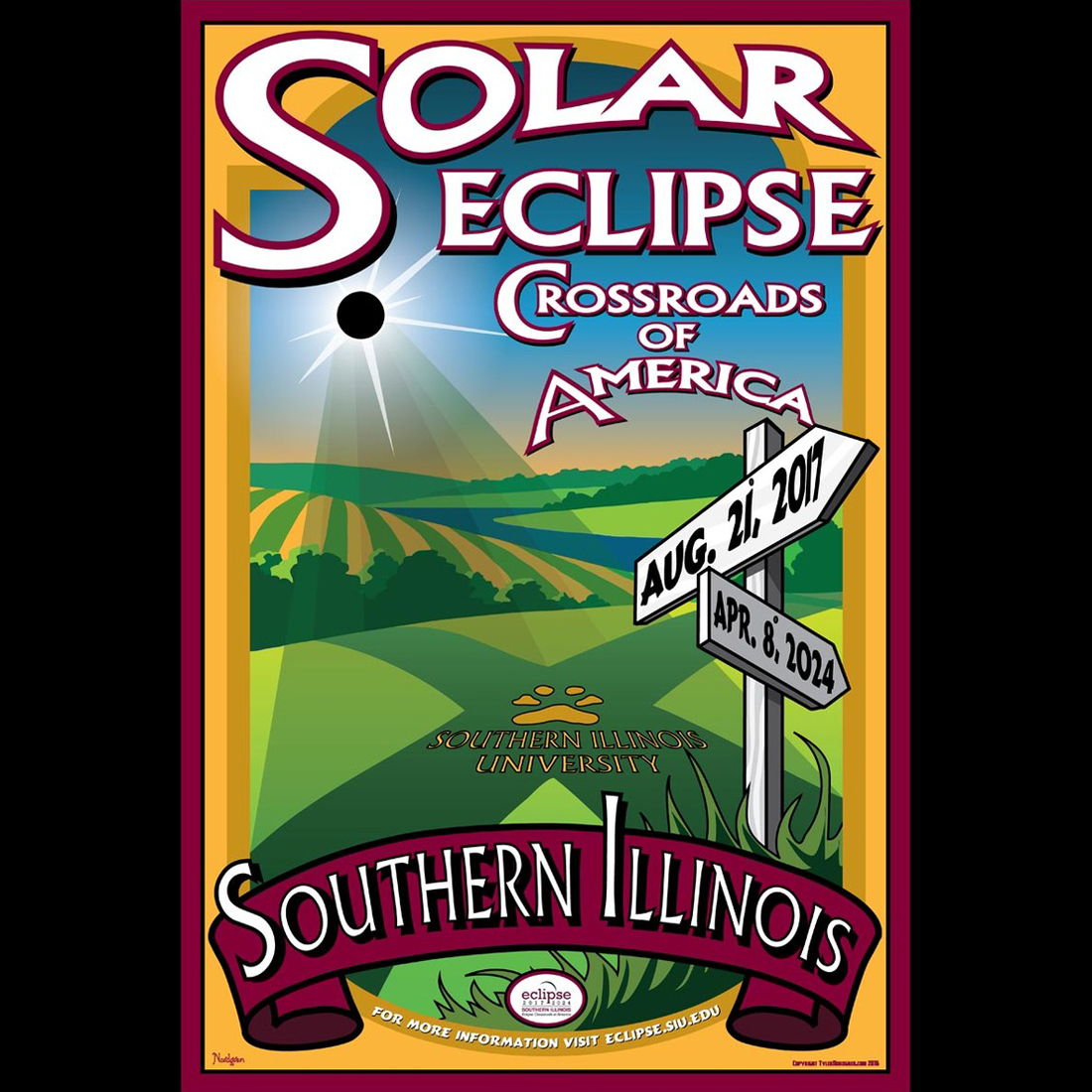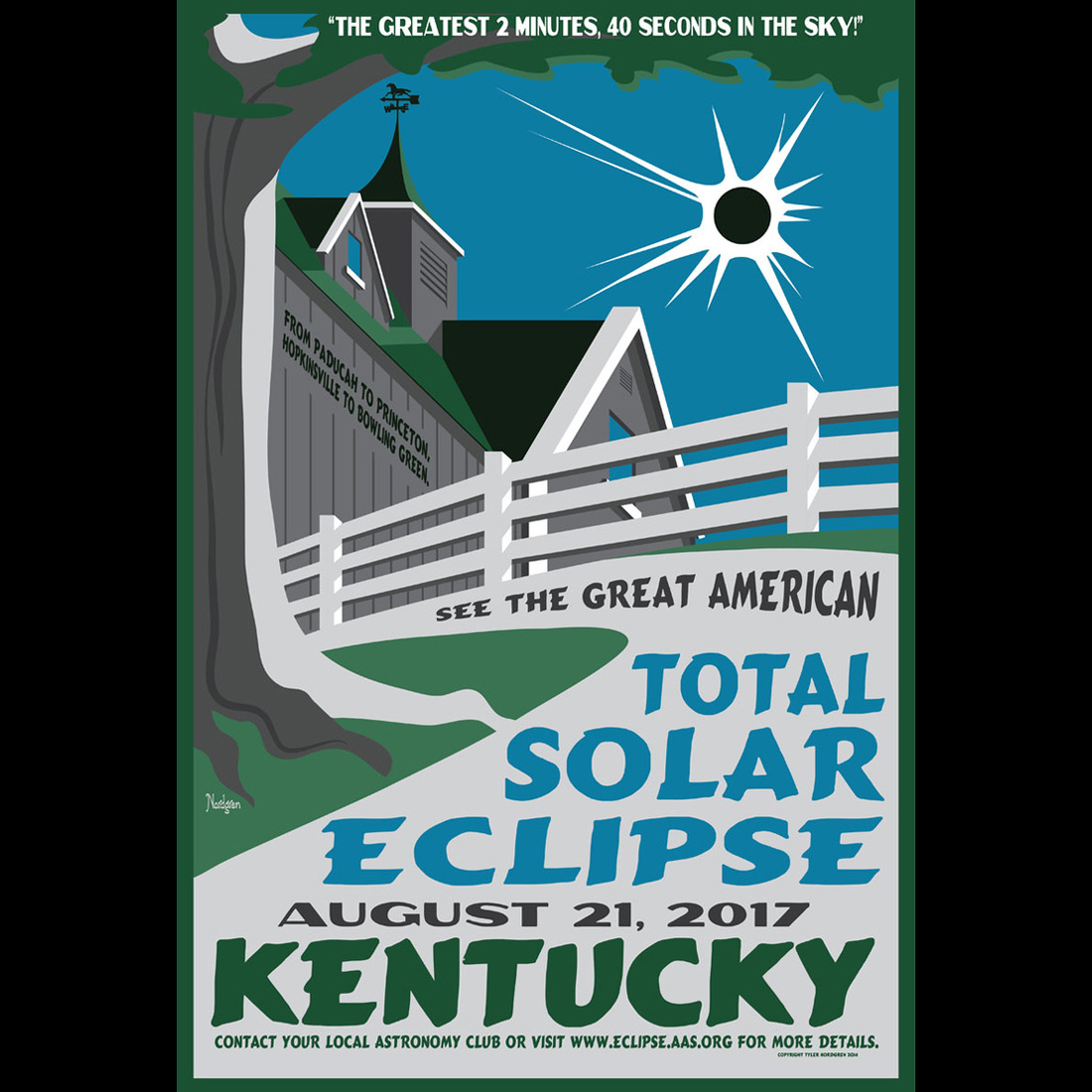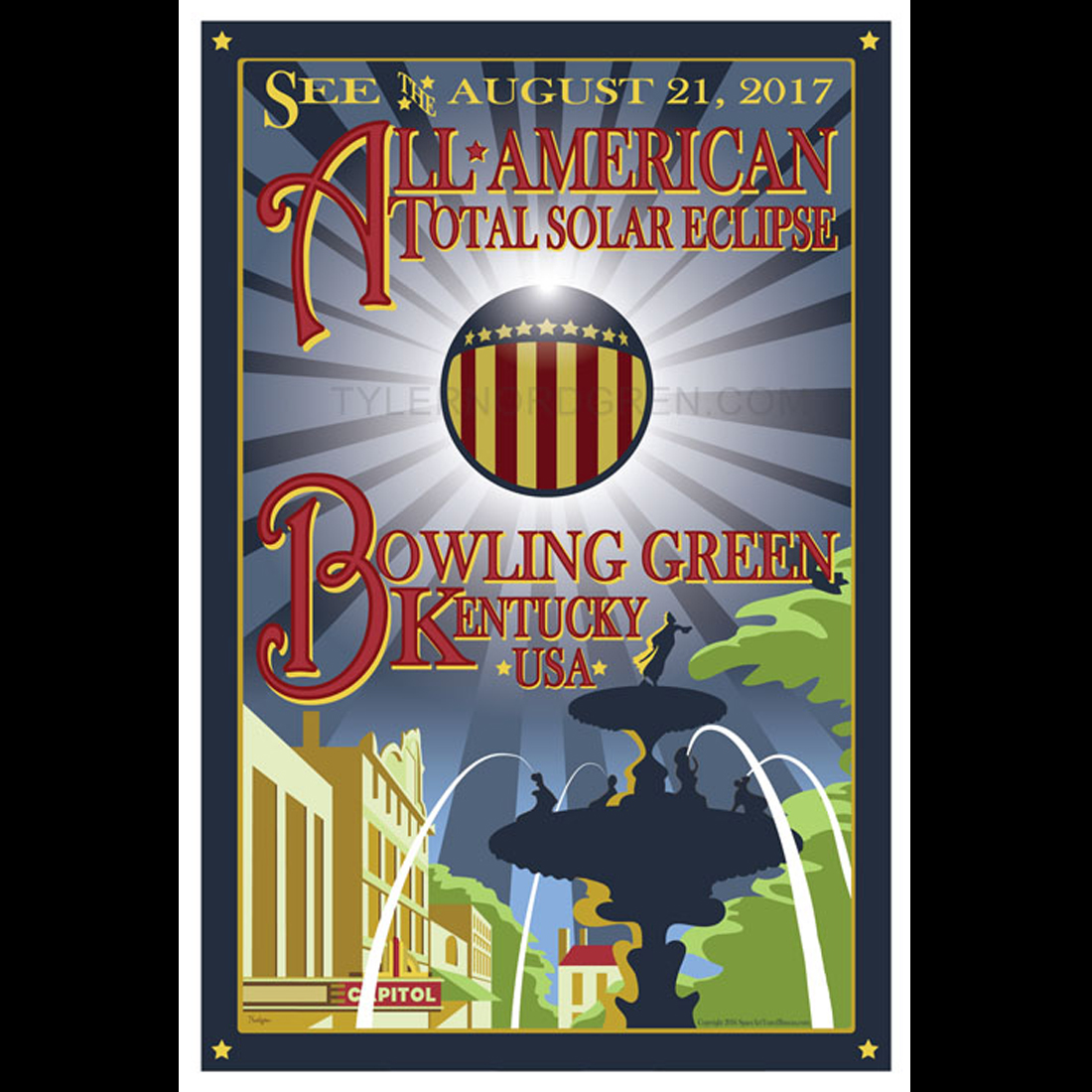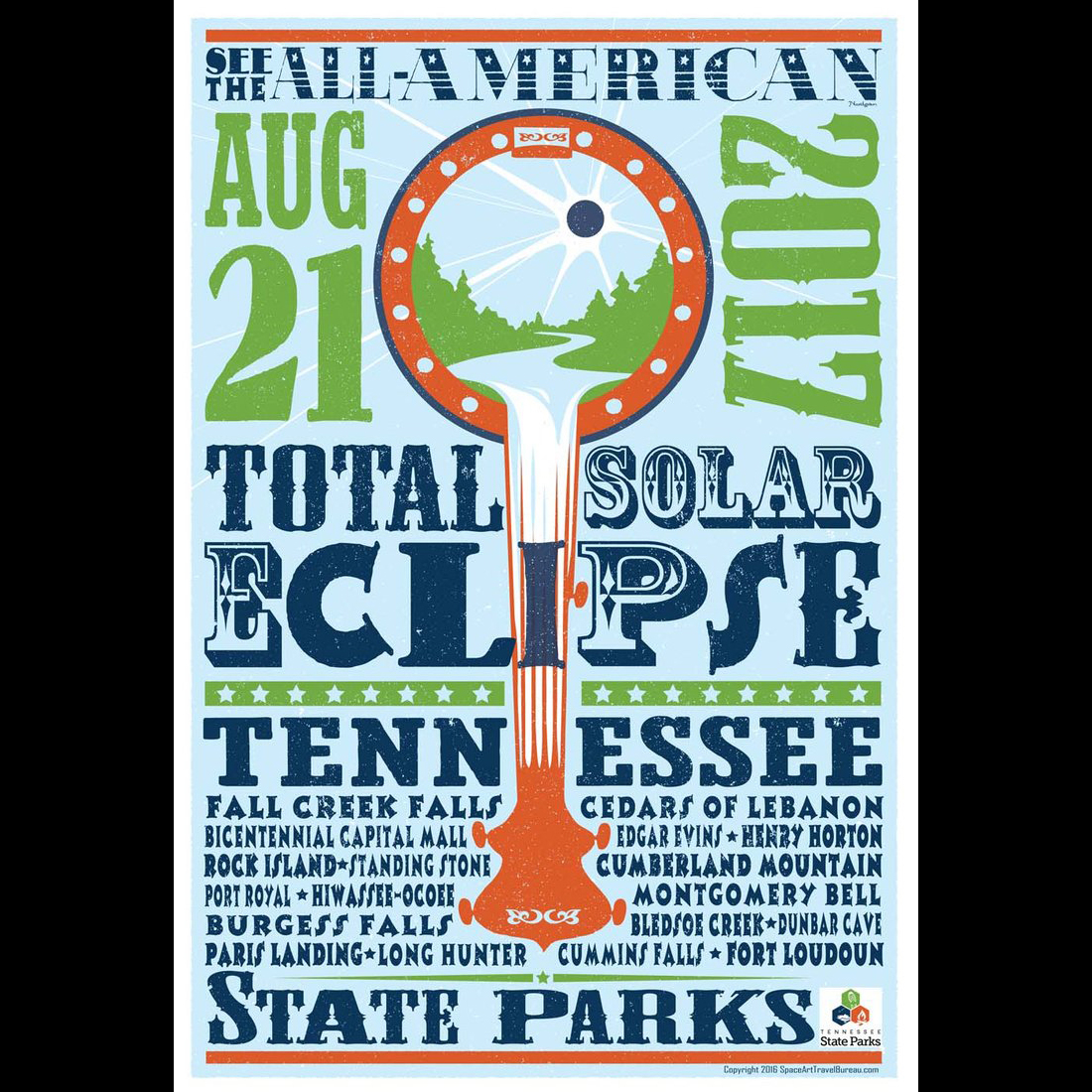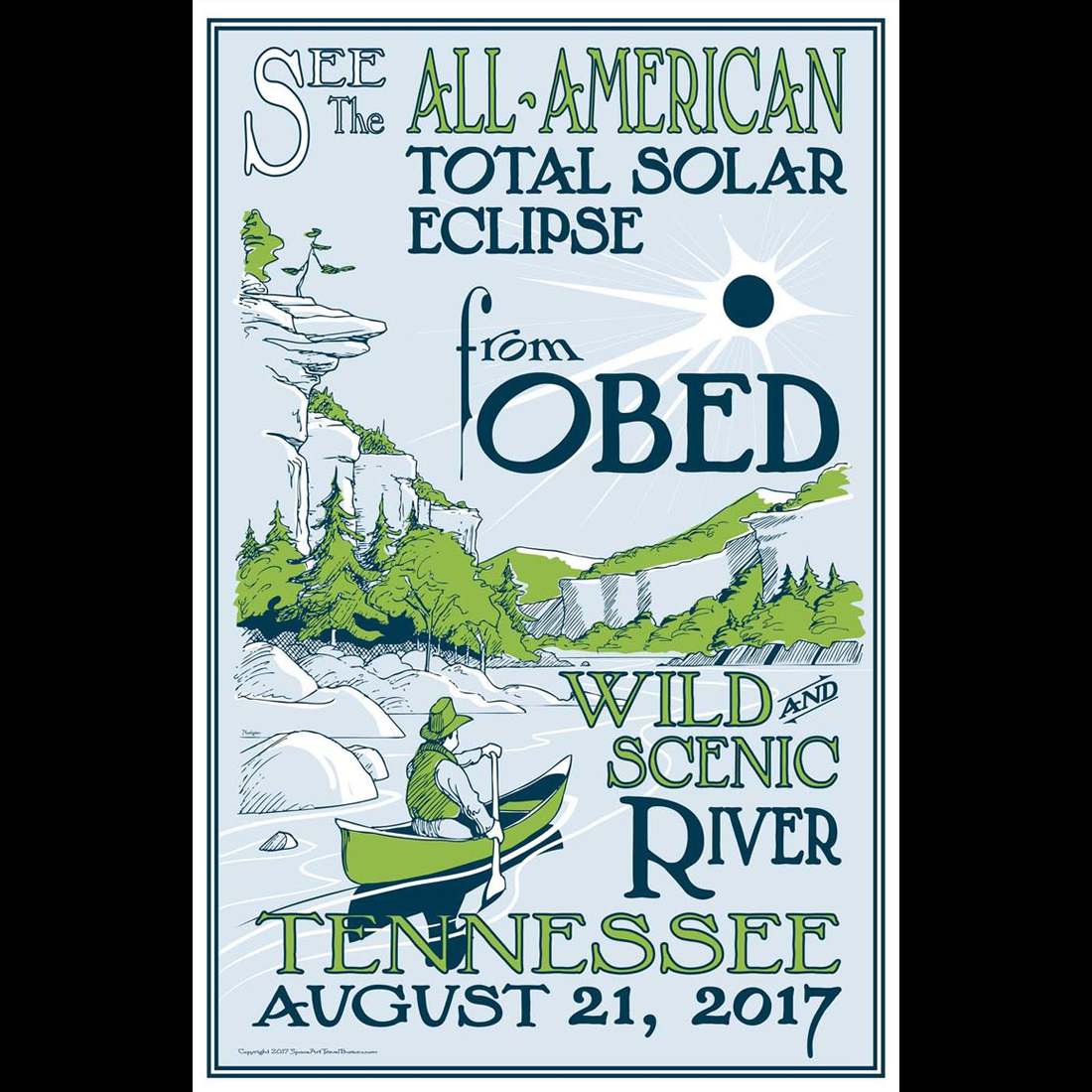Gorgeous 2017 Solar Eclipse Posters by Astronomer-Artist Tyler Nordgren (Gallery)
Nebraska
Homestead National Monument will be an official eclipse-viewing site in Beatrice, Nebraska. The moon's shadow bisects the state, starting west of the town of Alliance and running southeast to Beatrice before grazing Kansas. In Alliance, totality will be 2 minutes and 30 seconds, but in Beatrice, it will last an additional 5 seconds.
St. Joseph, Missouri
St. Joseph is another city that's about as close to the centerline of the path of totality as one can get. The moon will begin to creep across the face of the sun at 11:40 local time and pass over the star nearly 3 hours later, at 2:34 p.m. Totality will last 2 minutes and 39 seconds and start at 1:06 p.m. A prime viewing spot will be Rosecrans Memorial Airport, but parking space is limited and reservations close Aug. 11.
University of Missouri
At "Mizzou," as the school is affectionately known, on Aug. 19 and 20 the Laws Observatory will open to allow public viewing of the sun through a solar telescope, and there will be a viewing party on the campus on Aug. 21. The university is near to the centerline of totality and will fall in the moon's inner shadow for about 2 and a half minutes.
St. Louis
The last time the area that's now St. Louis experienced a total solar eclipse, Christopher Columbus' voyage was 50 years in the future. The city will have a viewing event at Jefferson Barracks Park, as the northern half of the city will be just outside the path of totality (downtown, the cutoff is roughly at Park Avenue). At the park, the eclipse starts at 11:49 a.m. and totality will happen at 1:17 p.m.
Southern Illinois University
Carbondale, Illinois, is the largest city close to the point of greatest duration (that spot is a few miles south of the city). Totality will last for about 2 minutes and 40 seconds there (so, not significantly longer than at other points along the centerline). Southern Illinois University (SIU) will host several eclipse-related events including an eclipse program from the university stadium. On the main SIU Carbondale campus, the eclipse starts at 11:52 a.m. local time with totality at 1:21 p.m. Carbondale also has the luck of being located in the path of totality for the next eclipse to arrive in the U.S., in 2024.
Kentucky
Some areas in Kentucky will experience a relatively long period of totality, lasting almost 2 minutes and 40 seconds. The town of Hopkinsville is right on the centerline. The point of greatest eclipse, where the centerline of the moon's shadow would pass through the center of the Earth, is just southeast of the town of Princeton.
Western Kentucky University
Western Kentucky University is just on the edge of the path of totality, and Aug. 21 is the first day of classes at the school. The university plans to invite thousands of public school students to the stadium to get them inside the zone of totality.
Breaking space news, the latest updates on rocket launches, skywatching events and more!
Bowling Green, Kentucky
Bowling Green will host several eclipse-related events, among them a "Blackout at the Ballpark," when the Class A Bowling Green Hot Rods play the West Michigan Whitecaps. The game starts at 10:35 a.m., and totality begins at 1:27 p.m. The park will offer free eclipse glasses to the first 2,000 guests.
Tennessee State Parks
The eclipse track will run southeast across Tennessee, from north of Nashville to the Nantahala National Forest, and along the way, it will pass through multiple State Parks.
Obed Wild & Scenic River
The entire Obed Wild & Scenic River region (maintained by the National Parks Service) will be in the path of totality, but it's large enough that the Obed Visitor Center, located farther from the centerline of the eclipse, will get only 1 minute and 14 seconds of totality. The Big South Fork Gateway Visitor Center will see a full 2 minutes and 29 seconds. The partial eclipse will start at about 12:03 p.m. local time.

Jesse Emspak is a freelance journalist who has contributed to several publications, including Space.com, Scientific American, New Scientist, Smithsonian.com and Undark. He focuses on physics and cool technologies but has been known to write about the odder stories of human health and science as it relates to culture. Jesse has a Master of Arts from the University of California, Berkeley School of Journalism, and a Bachelor of Arts from the University of Rochester. Jesse spent years covering finance and cut his teeth at local newspapers, working local politics and police beats. Jesse likes to stay active and holds a fourth degree black belt in Karate, which just means he now knows how much he has to learn and the importance of good teaching.
